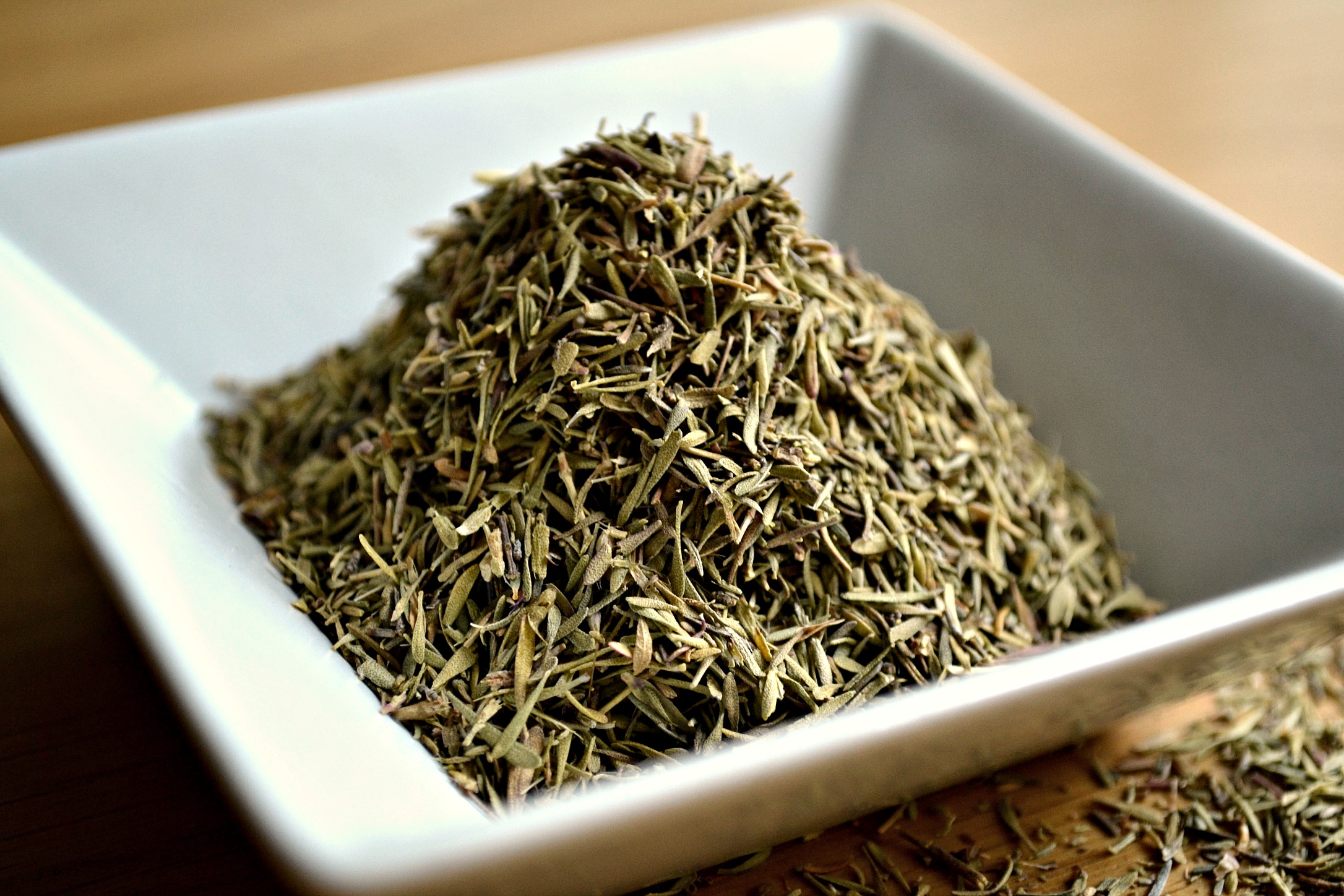

It has a spicy cinnamon-scented fragrance.
:max_bytes(150000):strip_icc()/how-to-grow-thyme-1402630-hero-d44ccea3e3604c1db97d23761b25de52.jpg)
Leaves, which are mild in flavour, are used like common basil.Ĭinnamon basil is a PERENNIAL, but often grown as an ANNUAL.
#Large leaf thyme full#
The plant prefers full sun in a moist, but well-drained soil. Used fresh in salads or as a garnish, with its lemon flavour it pairs beautifully with fruit dishes.īush basil is an ANNUAL growing to 30cm with a tidy rounded growth habit and tiny, light green leaves. The plant is revered as the elixer of life.Īn ANNUAL growing to 60cm with bright green lemon-and-basil-scented leaves and white flowers.

It is cultivated for religious and medicinal purposes and herbal tea and common to the Indian subcontinent and southeast Asia. Many branched, hairy stems carry simple ovate green leaves with slightly toothed margins. Holy basil is an erect SUBSHRUB that grows up to 60cm. All plant parts are edible, and it has been used historically as a medicine. The taste has been described as somewhat intermediate between parsley and celery. It prefers moist soil in a full sun or semi-shade position. Umbels of yellow-green flowers are followed by black seeds. The bright green leaves are bluntly toothed, and ternately divided. It has a strong solid stem that becomes hollow and grooved with age. Grow in similar conditions as common thyme.Īlexanders is a stout BIENNIAL flowering plant growing to 1.2m tall. Portuguese thyme has an aroma similar to Greek oregano, it is a very spicy herb, and is best used in dishes that require a highly-seasoned taste such as meat stuffings, beans, lamb roasts and Italian sauces.Broad-leaved thyme is a creeping EVERGREEN SHRUB growing to 20cm with slender stems and small aromatic leaves and pink flowers. This thyme is a favourite amongst French Caribbean cooks. This herb is ground and used as a chutney with East Indian delicacies, its also called “podina”’, but it is a wonderful aromatic when added to seafood, especially conchs, lambie and fresh fish at the very end of cooking. Spanish thyme grows to shrub-like size, and has a wonderful musky aroma enhanced by lemon. Spanish thyme is quite the opposite to French thyme, it has large, bright-green, serrated-edged leaves almost two inches in diameter, the leaves and stems are quite soft and watery. It’s also quite good when included in long, simmered tomato-based sauces and local soups. It’s wonderful when solely included in baked chicken, or roasted fish. Seldom does it grow much past ten inches in height. Why not take the time to enjoy the wonderful flavours of each individual thymeįrench thyme or our fine-leaved thyme is a classic herb, small leaves, tough stems, tiny mauve flowers, it smells warm, earthy and flowery, it is a little pungent and has a lovely clove-like aroma. Thyme is a great culinary herb and is a classic addition to many Caribbean pots, there are three varieties distinct to the Caribbean, each variety bringing its own distinct aroma and flavour to every recipe they’re included in. Why? Because when this cornucopia of fresh herbs is ground together, the stronger overpower the more delicate with not very pleasing end results. The home cook who proudly produces his/her own version of freshly-ground seasoning will sooner or later find that the food will have flavour distinct to none, and everything cooked will have the same flavour. This has become such a ritual that food manufacturers offer a bottled ground seasoning, which really has been so processed that the “concept” of fresh seasoning in a bottle is lost. This will always include a bunch of chadon beni (which flavours like cilantro), more celery, and a bunch of French thyme (fine thyme as it is also known), Spanish thyme (broad leaf thyme) and sometimes Portuguese thyme (oregano), some pimento peppers and even ginger root.

More often than not, more herbs are added to the mixture. On arriving home the cook would then proceed to wash and cut the herbs, then grind them in a food processor or blender. This bundle usually includes a few bunches of chives with roots attached, a small sprig of French thyme, and a few leaves of celery and maybe on occasion, parsley. CARIBBEAN cooks love to cook with herbs, a weekly trip to the market will always include a few bundles of “seasoning” as we know it.


 0 kommentar(er)
0 kommentar(er)
